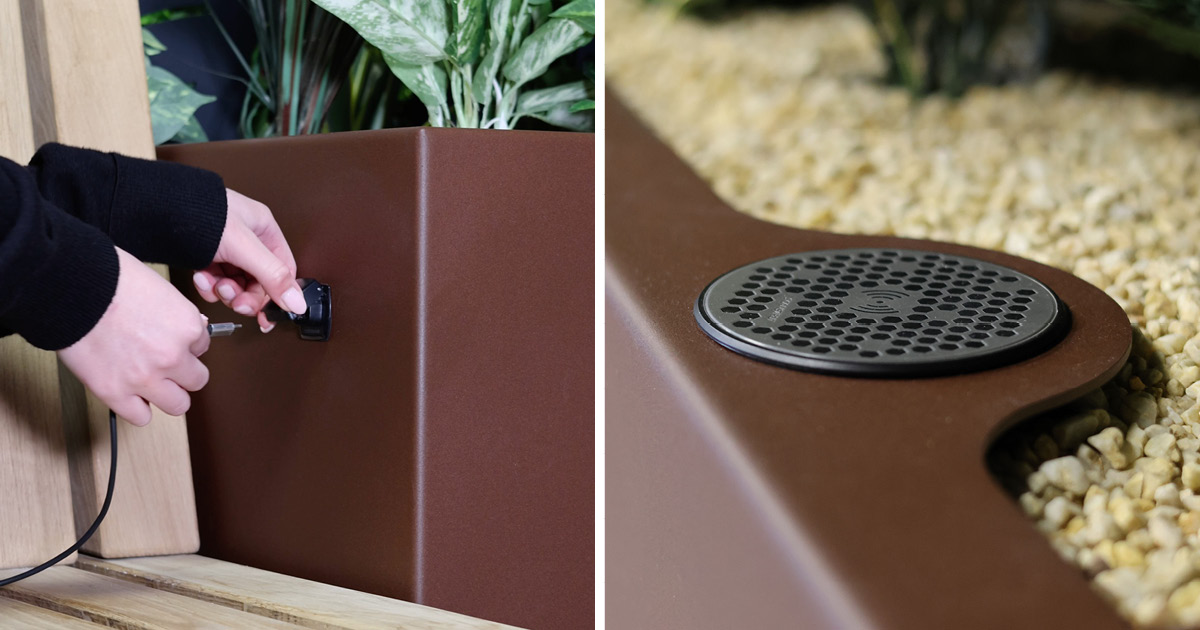
Public spaces play a critical role in shaping urban environments. When designed with intention, they foster social interactions, relaxation, and engagement with the surroundings. One of the most effective ways of enhancing public spaces is through thoughtfully designed seating. By integrating seating elements, landscape architects can create inviting and functional areas that cater to diverse user needs. Moreover, well-placed seating can significantly improve the overall experience of a public space.
Seating in public spaces is not just about providing a place to rest. Instead, it influences how people interact, move, and experience their environment. Well-placed seating encourages spontaneous gatherings, supports accessibility, and enhances the overall aesthetic of an area. Furthermore, when seating is integrated thoughtfully, it contributes to the identity and usability of a space, making it more appealing and functional.
Seating must be practical and comfortable. Ergonomically designed benches, modular seating arrangements, and adaptable furniture ensure that people of all ages and abilities can use them with ease. Additionally, the inclusion of armrests, back support, and varied seating heights accommodates different needs, making spaces more inclusive.
Seating should harmonise with the surrounding landscape. By integrating materials, colours, and forms that complement the existing environment, seating can enhance the visual appeal of public spaces. In addition, custom-designed benches or artistic seating installations can reflect local culture and history, adding character and identity to urban settings.
Innovative seating solutions allow spaces to be used in different ways. For example, modular and movable seating arrangements enable dynamic use, accommodating various events and activities. Furthermore, seating that doubles as play elements, performance stages, or communal tables fosters versatility in public spaces.
Well-designed seating fosters a sense of community by encouraging interaction. Strategically placed benches along walking paths, shaded rest areas, and seating clusters in plazas invite social engagement. Additionally, circular seating arrangements promote conversation, while amphitheater-style seating creates informal gathering spaces for performances and public discussions.
Interactive seating elements, such as swings, hammocks, and seating integrated with greenery, provide unique experiences. As a result, these features make spaces more attractive and enjoyable for users of all demographics.
Manchester Goods Yard is a pioneering office and retail development located in the heart of St. John’s, Manchester. As a key part of the city’s ongoing regeneration, this project aims to establish a cutting-edge media and technology hub that combines business, culture, and leisure. Expansive bespoke timber seating areas were specified, offering comfortable spots for relaxation and providing workers with places to unwind. These seating pockets seamlessly blend nature with the modern aesthetic of the development, fostering a sense of connection in the bustling heart of Manchester Goods Yard.
The historic Old War Office, with corridors once walked by Winston Churchill and Edward VIII, is now a luxury hotel and residence. Staple Raised Planter Edging in PPC was chosen to create a sleek and luxurious finish. Bespoke timber integrated seating provide comfortable areas for guests and residents to relax and unwind amidst lush planting and foliage.
Eco-friendly seating solutions contribute to the sustainability of urban landscapes. Recycled materials, solar-powered charging benches, and seating with integrated greenery reduce environmental impact. Additionally, water-permeable surfaces and locally sourced materials further promote sustainable design.
Up-cycling old infrastructure into seating elements also preserves resources. For instance, repurposed railway sleepers, reclaimed wood, and salvaged stone create unique seating that carries historical significance while reducing waste.

As urban areas evolve, public seating solutions must adapt to changing needs. Smart seating, incorporating technology such as USB charging ports, Wi-Fi hotspots, and real-time environmental monitoring, enhances user experiences. Moreover, adjustable and modular seating systems offer flexibility for future urban developments.
Community-driven design approaches will continue shaping seating solutions. By involving local communities in the planning process, designers can ensure that seating reflects cultural preferences, accessibility needs, and functional requirements. As a result, these spaces become more inclusive and engaging.
Integrated seating transforms public spaces into vibrant, inclusive, and functional areas. By prioritising comfort, durability, aesthetics, and sustainability, landscape architects can design seating solutions that enhance social interactions and urban experiences. Furthermore, thoughtful seating design not only improves the usability of public spaces but also contributes to a sense of community and place identity. As cities grow, well-integrated seating will remain a key element in creating dynamic and welcoming environments.
Wondering how to design public spaces with well-designed integrated seating? Watch our ‘3 Standard Seating Designs’ video for more inspiration.